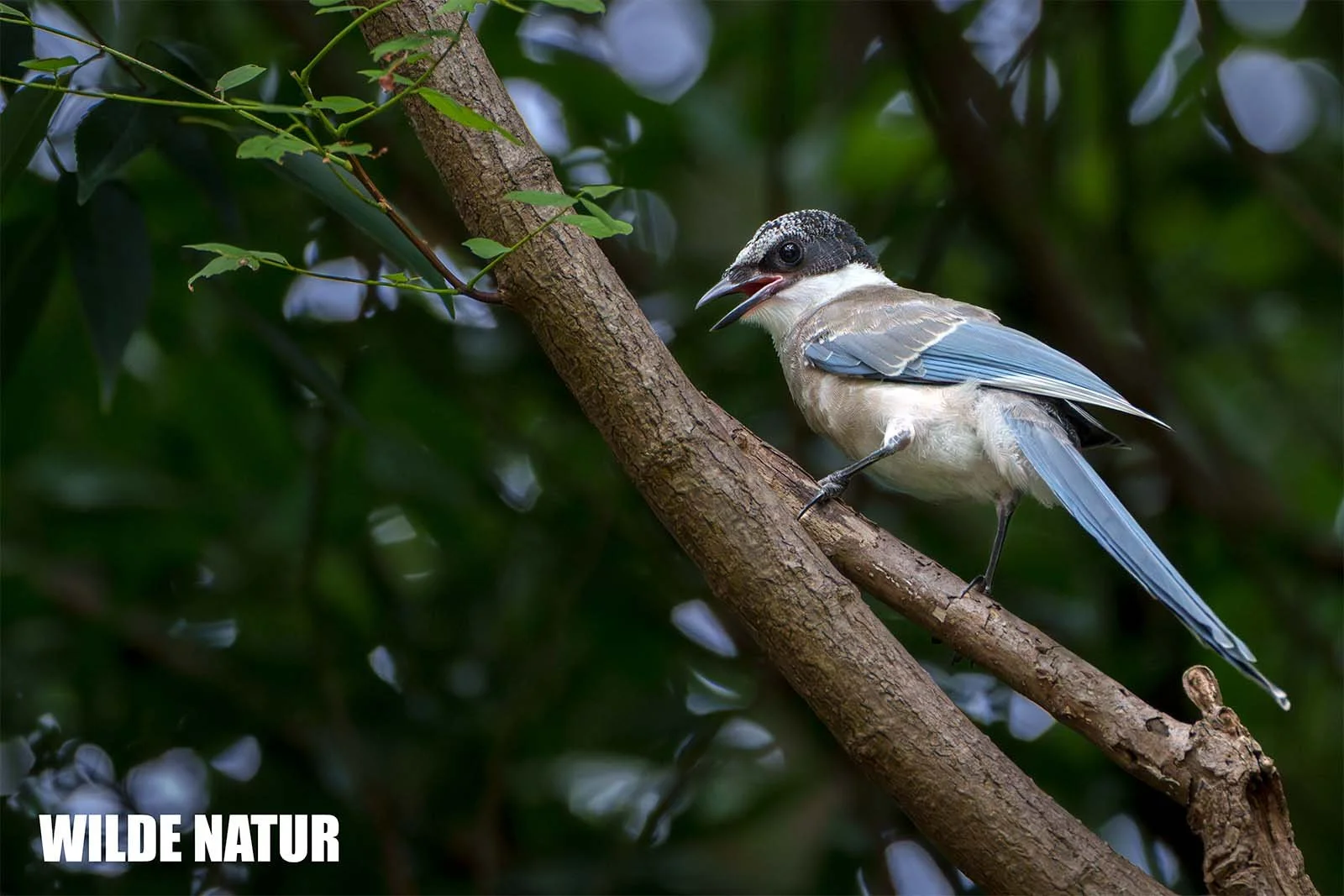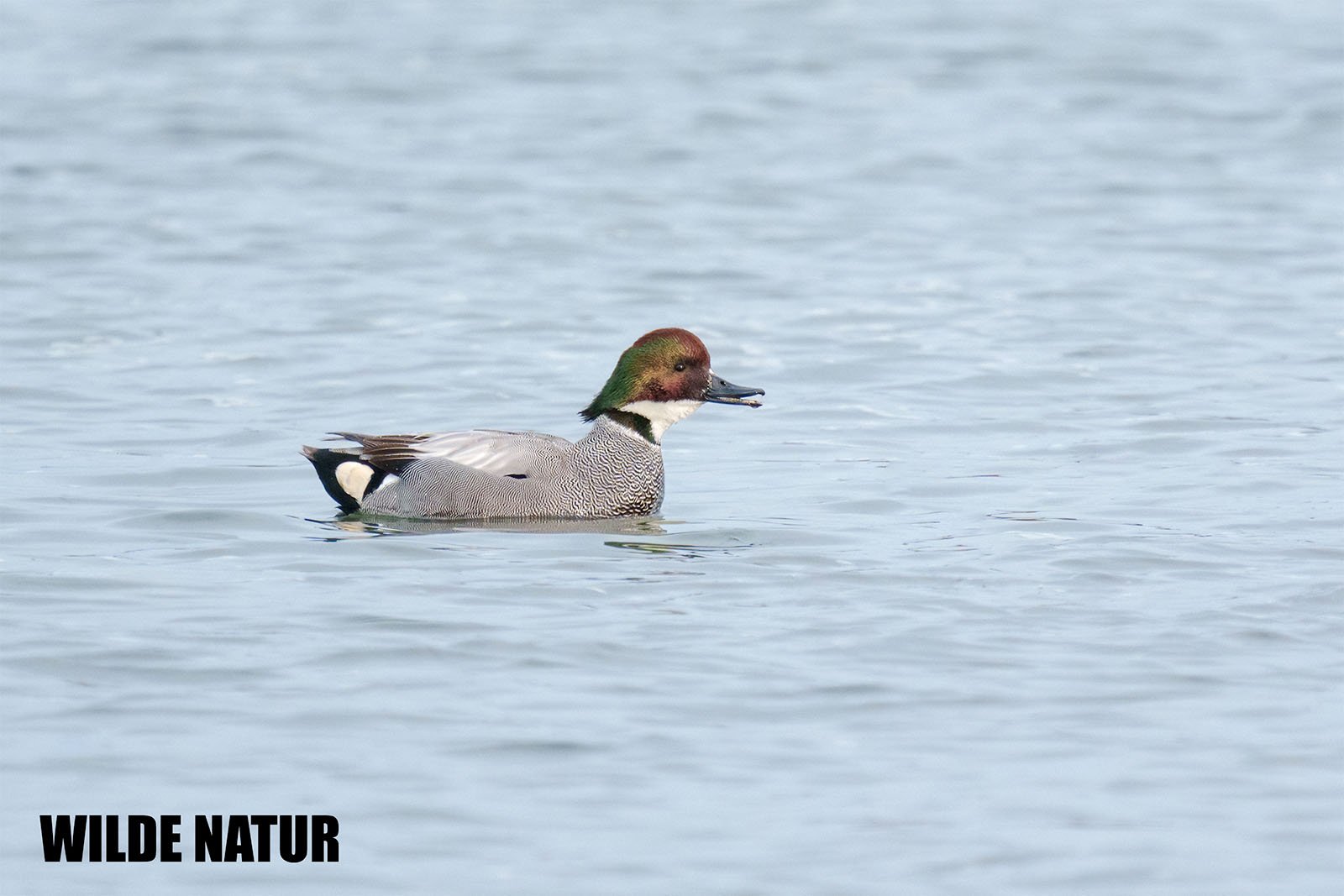Tufted duck (Aythya fuligula)
Tufted duck (Aythya fuligula) male with striking black and white plumage
Tufted duck (Aythya fuligula) female with inconspicuous brown plumage
Tufted Duck (Aythya fuligula) – The Elegant Diver
The tufted duck is an elegant diving duck, easily recognized by its distinctive head crest and contrasting black and white feathers. The male stands out with its striking appearance, while the female has a more subtle brownish color. Tufted ducks are often found on deep lakes, reservoirs, and coastal areas, and they are also common in city parks and ponds.
Quick Facts:
- Size: 40–47 cm
- Features: Male with black upper body, white belly, and long crest; female darker and less distinctive
- Habitat: Deep lakes, reservoirs, coastal waters; often found in city parks and ponds
- Breeding: Nests in colonies near gulls for protection from predators
- Diet: Mussels, snails, insect larvae, which they catch by diving to the bottom of the water
Table of Contents
- Introduction: The Tufted Duck – The Elegant Diver
- Features and Appearance: How to Recognize the Tufted Duck
- Habitat and Distribution: Where the Tufted Duck Lives
- Behavior and Diet: A Skilled Diver Underwater
- Breeding: Protected Nests Near Gulls
- FAQ: Common Questions About the Tufted Duck
- Shortlist – Key Features
1. Introduction: The Tufted Duck – The Elegant Diver
The tufted duck is an impressive water bird commonly found in European waters. The male is particularly eye-catching due to its striking black and white plumage and the elegant tuft of feathers on its head. It prefers deep lakes and reservoirs where it can dive skillfully in search of food.
2. Features and Appearance: How to Recognize the Tufted Duck
The tufted duck is easy to recognize, especially the male with its striking colors and long head crest.
Plumage:
- Male: The male has a striking black upper body and a white belly. The head shines with a slight greenish tint in the sunlight, and the long tufted crest at the back of its head adds to its elegant look.
- Female: The female is more subtly colored, with mostly brown tones, and the sides are slightly lighter. Both the male and female have a yellow eye, which stands out against their dark feathers.
Bill: The blue-gray bill with a black tip is wide and strong, perfect for picking up mussels and snails from the water's bottom.
Eyes: The yellow eyes give the tufted duck a sharp and watchful expression, which helps them spot prey underwater.
Feet: The black feet are webbed, helping the duck to swim and dive with ease. These strong feet allow the duck to maneuver quickly in the water as it hunts for food.
3. Habitat and Distribution: Where the Tufted Duck Lives
Tufted ducks are found in deep lakes, reservoirs, and coastal waters. They also adapt well to city parks and ponds, making them a common sight in urban environments. They prefer calm waters where they can dive in peace to search for food.
4. Behavior and Diet: A Skilled Diver Underwater
Tufted ducks are excellent divers, capable of diving up to 10 meters deep to catch mussels, snails, and insect larvae from the bottom. Their strong legs and webbed feet make them agile in the water, allowing them to dive and stay underwater for several seconds while searching for food.
5. Breeding: Protected Nests Near Gulls
Tufted ducks often build their nests close to gull colonies because the presence of gulls helps protect them from predators. The nests are usually hidden in reed beds or near the water's edge, where the female lays 6 to 10 eggs in the spring, which she incubates alone.
6. FAQ: Common Questions About the Tufted Duck
1. Where do tufted ducks live?
Tufted ducks live in deep lakes, reservoirs, coastal waters, and also in city parks and ponds.
2. What do tufted ducks eat?
Tufted ducks eat mussels, snails, and insect larvae, which they dive to the bottom of the water to catch.
3. How can I recognize a tufted duck?
The male has a black upper body, white belly, and a long crest on its head. The female is brown and less distinctive.
4. How deep can a tufted duck dive?
Tufted ducks can dive up to 10 meters deep to search for food at the bottom of lakes or ponds.
5. Where do tufted ducks build their nests?
Tufted ducks build their nests near gull colonies for protection, often hidden in reed beds or close to the water's edge.
7. Shortlist – Key Features
- Size: 40–47 cm
- Male: Black upper body, white belly, long crest
- Female: Brown tones, lighter sides
- Bill: Blue-gray with a black tip
- Eyes: Yellow
- Feet: Black, webbed
- Habitat: Deep lakes, reservoirs, coastal waters, city parks
- Diet: Mussels, snails, insect larvae
The tufted duck is a striking and skilled diver, especially the male with its unique tuft and contrasting plumage. It is a fascinating bird that can be observed both in wild waters and urban areas.






















